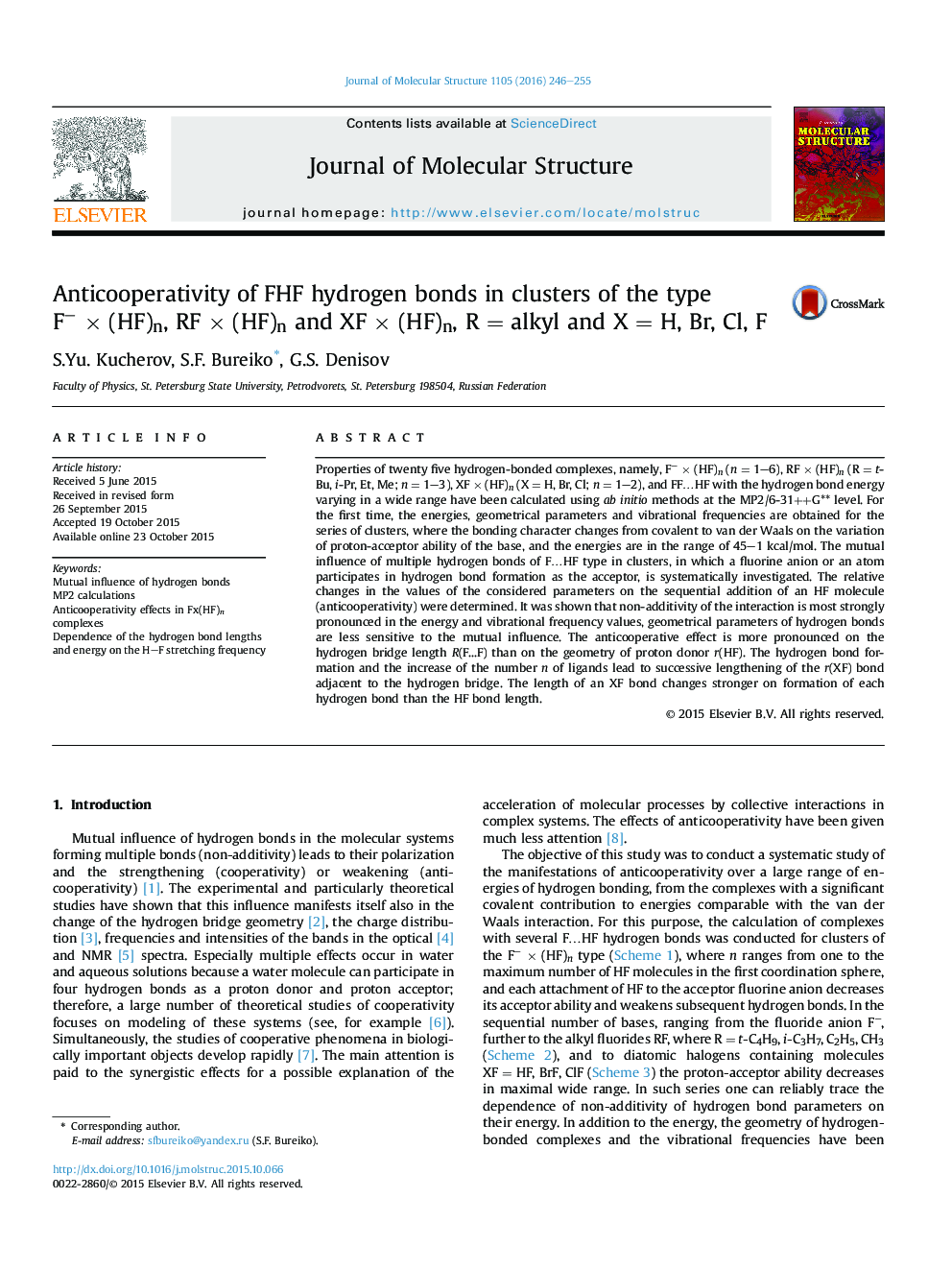| کد مقاله | کد نشریه | سال انتشار | مقاله انگلیسی | نسخه تمام متن |
|---|---|---|---|---|
| 1405263 | 1501712 | 2016 | 10 صفحه PDF | دانلود رایگان |

• Mutual influence of hydrogen bonds in the molecular clusters.
• Anticooperative effects in energy and structure for F− × (HF)n and RF × (HF)n complexes.
• The addition of each subsequent HF ligand leads to a decrease in the binding energy.
• The geometric parameters are less sensitive to the mutual influence than the energy changes.
Properties of twenty five hydrogen-bonded complexes, namely, F− × (HF)n (n = 1–6), RF × (HF)n (R = t-Bu, i-Pr, Et, Me; n = 1–3), XF × (HF)n (X = H, Br, Cl; n = 1–2), and FF…HF with the hydrogen bond energy varying in a wide range have been calculated using ab initio methods at the MP2/6-31++G** level. For the first time, the energies, geometrical parameters and vibrational frequencies are obtained for the series of clusters, where the bonding character changes from covalent to van der Waals on the variation of proton-acceptor ability of the base, and the energies are in the range of 45–1 kcal/mol. The mutual influence of multiple hydrogen bonds of F…HF type in clusters, in which a fluorine anion or an atom participates in hydrogen bond formation as the acceptor, is systematically investigated. The relative changes in the values of the considered parameters on the sequential addition of an HF molecule (anticooperativity) were determined. It was shown that non-additivity of the interaction is most strongly pronounced in the energy and vibrational frequency values, geometrical parameters of hydrogen bonds are less sensitive to the mutual influence. The anticooperative effect is more pronounced on the hydrogen bridge length R(F...F) than on the geometry of proton donor r(HF). The hydrogen bond formation and the increase of the number n of ligands lead to successive lengthening of the r(XF) bond adjacent to the hydrogen bridge. The length of an XF bond changes stronger on formation of each hydrogen bond than the HF bond length.
Figure optionsDownload as PowerPoint slide
Journal: Journal of Molecular Structure - Volume 1105, 5 February 2016, Pages 246–255